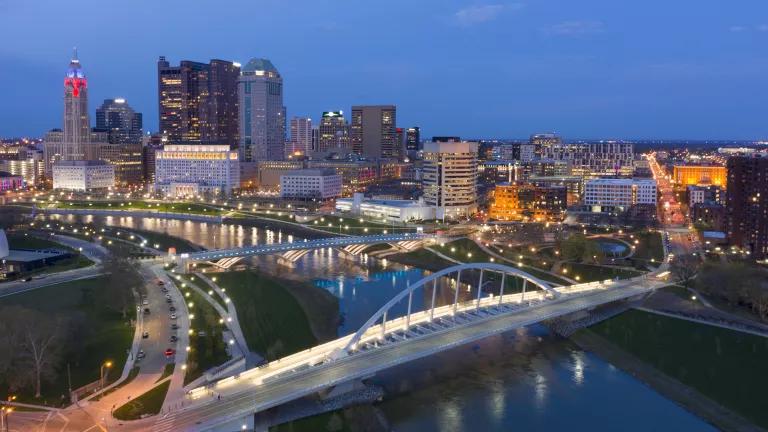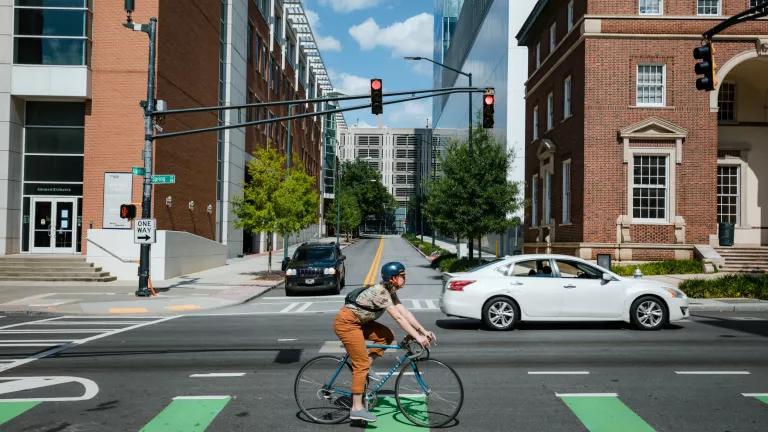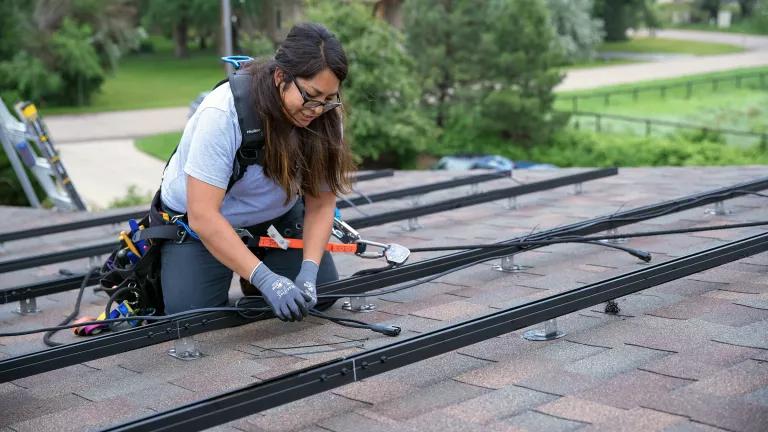Columbus’ Clean Energy Revolution Is Underway
Columbus is on the road to a clean energy transformation.

This blog was co-authored with Jenna Tipaldi, Climate Advisor to the City of Columbus.
Columbus is on the road to a clean energy transformation. In November, residents voted overwhelmingly in favor of Issue 1, giving the city the right to contract for clean electricity on behalf of residents and small businesses at competitive rates and positioning them to become carbon neutral by 2050. Now, the initiative is officially underway.
The first wave of letters announcing the community choice aggregation program—called Clean Energy Columbus—began hitting mailboxes in mid-April. Under the program, all Columbus residents or small businesses served by AEP Ohio will be automatically enrolled in the program, providing them with electricity sourced entirely from Ohio-based renewable energy assets.
City of Columbus
Why Clean Energy Columbus Makes Sense
Beginning this June, renewable energy credits will be used to provide clean energy to eligible customers as new Ohio-based wind and solar projects complete construction and begin powering the grid by next summer. Resident and small business participants have the chance to greatly reduce their carbon footprint: Clean Energy Columbus is set to shrink the city’s annual carbon emissions by an estimated 1.2 million metric tons annually, providing the equivalent of taking around 300,000 cars off the road and the same benefits of nearly 1.8 million acres of forests.
But the program isn’t just good for the environment; it’s a win for the economy and labor market, too. Construction and maintenance of new wind and solar technologies will support as many as 4,500 jobs in Ohio, and backing by labor unions like the International Brotherhood of Electrical Workers exemplifies how Clean Energy Columbus will put skilled tradespeople to work.
Through the program, the City of Columbus is forming a Clean Energy Workforce Development Committee to support building a diverse, local workforce pipeline into clean energy and energy efficiency jobs. In addition, Clean Energy Columbus includes a community grant in its rate, which allows the City to support such workforce development efforts and reinvest equitably into the community with a specific focus on sustainability and energy efficiency efforts.
These advantages were not lost on Columbus residents, 76 percent of whom approved the ballot initiative. This goes to show that despite widespread polarization across the country, climate action is something that voters across the political spectrum can unite over. Columbus’ program will be the largest in Ohio and the only program with a clear path to 100% Ohio-based wind and solar generated energy.

Columbus Is Making Its Mark as a Clean Energy Leader
Columbus is striving to be a clean energy leader, and continued making key advancements despite the difficulties 2020 presented. Not only did it pass a benchmarking and transparency ordinance last March, it also successfully completed more than 30,000 home energy audits within just two years. With support from Bloomberg Philanthropies American Cities Climate Challenge and Energy Foundation, home energy audits were conducted to evaluate residents’ energy usage and identify areas with greater efficiency potential.
Energy audits were focused in eight Columbus neighborhoods with the goal of reducing energy burden—where residents pay a higher percentage of their income on energy costs, upwards of three times higher than non-low-income households. Residents were connected to rebates and resources to help them reduce their energy waste and lower utility bills.
There are plenty of simple, affordable ways to improve energy efficiency: weather stripping to reduce drafts, low-flow showerheads, LED light bulbs, and more. These steps not only cut down on homes’ greenhouse gas emissions output, but also reduce households’ heating and cooling bills each month.
Climate Action as the Path to Recovery
The COVID-19 pandemic has caused many working families significant economic strain, and exacerbated an already disproportionate energy burden shouldered by communities of color and poor communities. As cities weigh what the path to recovery looks like, people on both sides of the aisle are seeing climate action for the common sense solution that it is.



